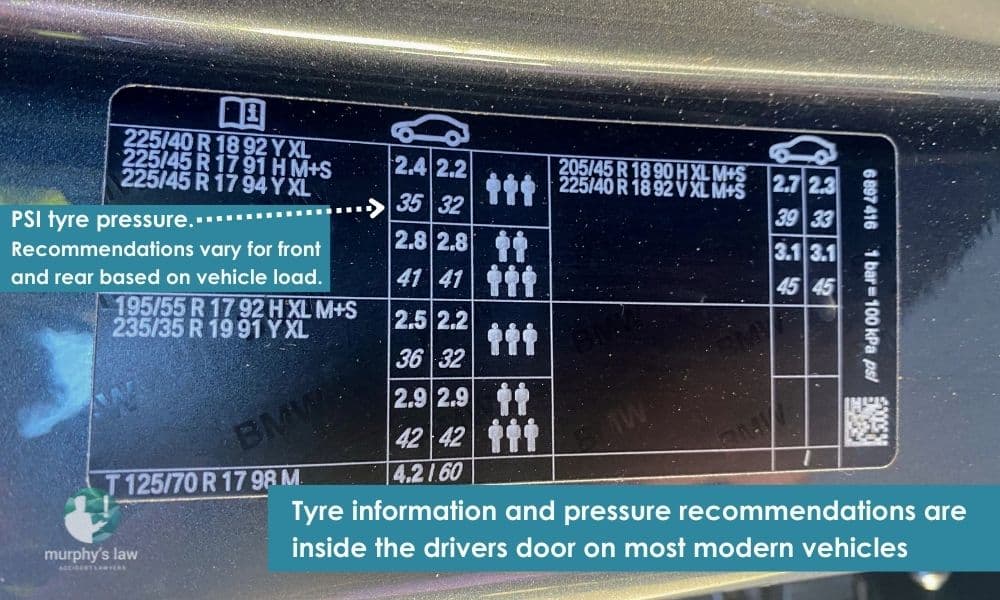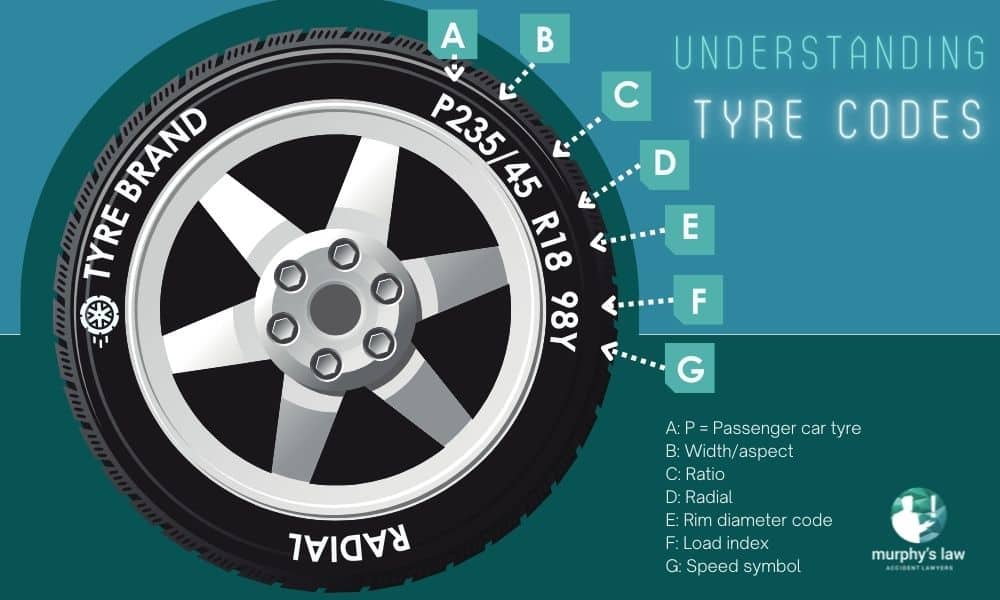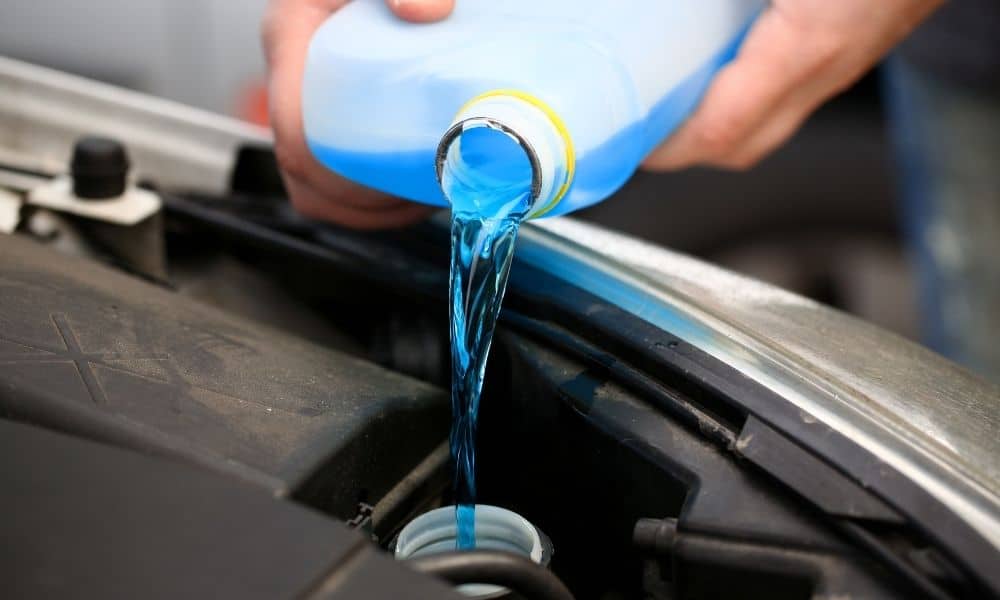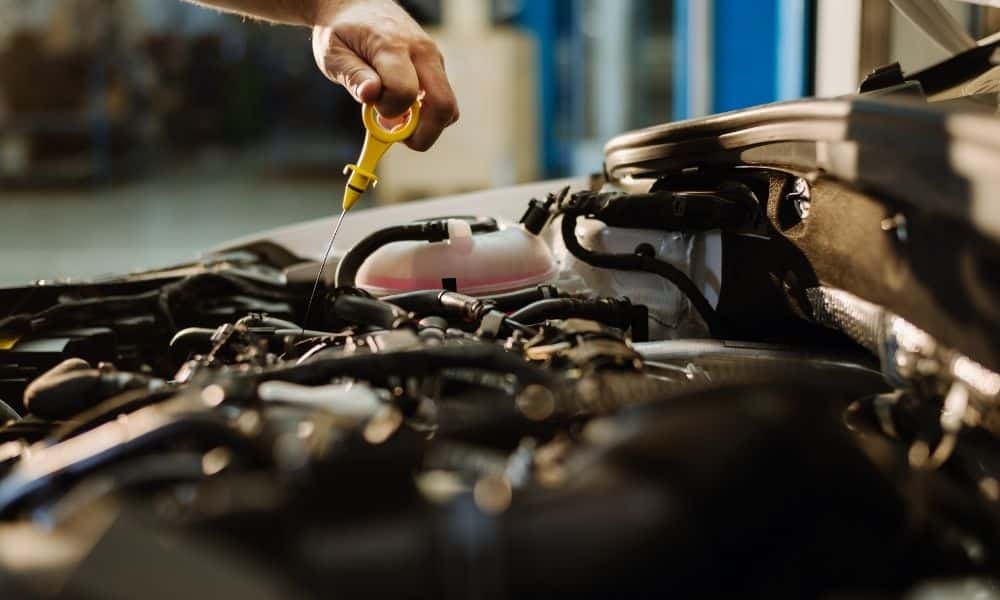Keeping your car in good condition is essential for safety and reliability. While factors such as distraction, speeding, fatigue and alcohol are major causes of car accident injuries, badly maintained cars can also contribute. For example, having bare threads on your tyres could increase your stopping distance and increase the risk of a serious injury or road fatality.
That's why it's important to perform regular maintenance on your vehicle, even if you only use it occasionally. If you're not sure what sort of services you should have done at a garage or dealership, read on! We'll go through the main areas where routine checks are needed: tyres, lights, battery and screenwash; then we'll talk about oil changes too...
Wheels and tyres
- Check tyre pressure every month - you should be able to find the ideal pressure shown inside your fuel cap door. It’s also often shown on a sticker inside of the driver's door. Driving with your tyres below the ideal pressure will increase fuel consumption and wear the tyre down much faster. Petrol stations with digital display air pumps make it easy to get the pressure correct. Just set it to the recommended level and then the pump will stop when it hits the set pressure.

- Check tyre tread depth every month - take a look at the tyre tread depth and plan for replacement tyres if they are wearing thin. Thin tread reduces your ability to stop which can lead to road accidents and injuries, especially in the wet.
- Check for any signs of damage to your tyres such as bulges or cuts and have them repaired immediately. Small damage and even slow punctures can often be repaired which is much cheaper than a replacement.
- Have your tyres rotated every 10,000 kilometers to maximize their life-span - some tyre workshops such as Bridgestone offer this service for free. Well aligned wheels save wear on your tyres, reduce fuel consumption and help with overall safety.

Most of the time, all you really need to know for your tyres are the recommended pressure such as PSI and keep an eye on the tread wear. However, if you are wondering what the codes mean on your tyres, the illustration above and key below provide an overview.
- A = Vehicle type: A letter such as P is to show it is for passenger vehicles.
- B = Width/aspect: This number such as 235 is the width of the tyre in millimetres
- C = Ratio: The aspect ratio is the height of the tyre measured from the base to the rim and represents the percentage of the tread width. Low profile tyres will therefore have lower aspect ratios.
- D = Tyre construction method such as 'Radial' or 'Bias': Refers to how they are constructed and 'Radial' is the most common.
- E = Rim diameter: This is simply the diameter of the wheel rim in inches. A vital measurement to ensure you get replacements that fit. Common wheel sizes include 15, 18 and 21 inches.
- F = Load index: This is the maximum load capacity the tyres can be used under.
- G = Speed symbol: This represents the top speed the tyres can be used at under the recommended wear and pressure ratings. A selection of these codes are shown below. It's largely alphabetical but not entirely, as seen by the 'H' rating below. Passenger cars are normally between the T and Y ratings shown below which is 190-300km per hour.
| Speed symbol | Speed (km/h) | Speed (mp/h) |
| P | 150 | 94 |
| Q | 160 | 100 |
| R | 170 | 106 |
| S | 180 | 112 |
| T | 190 | 118 |
| U | 200 | 124 |
| H | 210 | 130 |
| V | 240 | 149 |
| W | 270 | 168 |
| Y | 300 | 186 |
Make Sure Your Lights Work
Before you turn on the ignition, take a moment to look at your car. Check that all lights are working: headlights, tail lights, indicators and brake lights. If you see any problems with them, get them fixed immediately or risk getting a ticket or being pulled over by police.
Make sure that all bulbs are in working order as well—a burnt out bulb can be an expensive mistake if it results in a ticket or crash! Make sure the bulbs are the right type (HID, LED or halogen for example) and wattage for their respective applications—this will help keep them from burning out quickly.
Also make sure that each bulb is the right colour for its application; if it's not white enough then it'll look yellowish but too white then it'll look blueish so choose wisely! Most car parts shops such as Supercheap, Autobahn and Repco can look up your vehicle make and model to recommend the right lights for your vehicle. You can also find that information including tips on changing them within your car manual.
Battery
If you find any of the following issues with your battery, it should be replaced:
- The battery terminals are dirty. Clean them with a wire brush or sandpaper.
- The car won't start. This could mean there's an electrical problem or that the battery is dead. Check the alternator belt to make sure it's tight and not damaged, then check all fuses (especially those underhood). If none of these things resolve the issue, replace your battery.
- The power steering fluid reservoir is empty and/or leaking fluid onto the ground beneath it—this indicates that your power steering pump has failed and needs replacement.
- A dripping sound during operation—this may indicate a leaky radiator cap or hose failure; check for leaks by spraying soapy water along suspected areas; if bubbles form when spraying soap on hoses or other components (such as oil filters), they may need replacing soon!
It’s best to get your battery changed professionally for safety and to avoid any electrical damage to the vehicle systems.
Screenwash and wipers

A clear windscreen makes for a safe drive. Make sure you’ve got screenwash and change your wipers if they are smearing.
- Check screen wash level every few weeks.
- Top up screenwash levels when the fluid drops below the minimum level mark on the reservoir.
- Don’t mix tap water with your screenwash – use only filtered or bottled water, as this will help prevent any contaminants from getting into your windscreen washer system, potentially causing damage and poor visibility. You can also buy ready to use screen wash.
Oil

The engine must have a healthy supply of oil in order to operate properly. So it's critical that you check the oil levels and quality on a regular basis. Make sure there's enough oil in your car at all times, and make sure that the filter hasn't been compromised by debris or foreign matter. Check the coolant as well; if it's dirty, then your engine might have some serious problems ahead of it!
Also keep an eye on other parts of your car's engine: Check out the radiator cap, which keeps pressure within normal bounds; similarly with any water pumps or similar systems—if they're damaged or broken down due to lack of maintenance, then they should be replaced immediately before they cause further damage (and may even cause an accident).
You can take simple steps to keep your car safe to drive.
You can take simple steps to keep your car safe to drive.
- Take it for regular servicing. Have a mechanic check that the tyres are at the right pressure, and that they're wearing evenly. Look out for any signs of damage or excessive wear.
- Check all lights and indicators are working properly by switching them on before you start driving - if they don't work, get them inspected straight away by a qualified professional.
- Check screenwash levels regularly so that you can see clearly in wet weather - remember not to use any product other than what's recommended for your vehicle as some could damage its paintwork or even cause an electrical fire!
We hope that you’ve found this article useful, and we hope it has encouraged you to take action in your own car safety maintenance.
